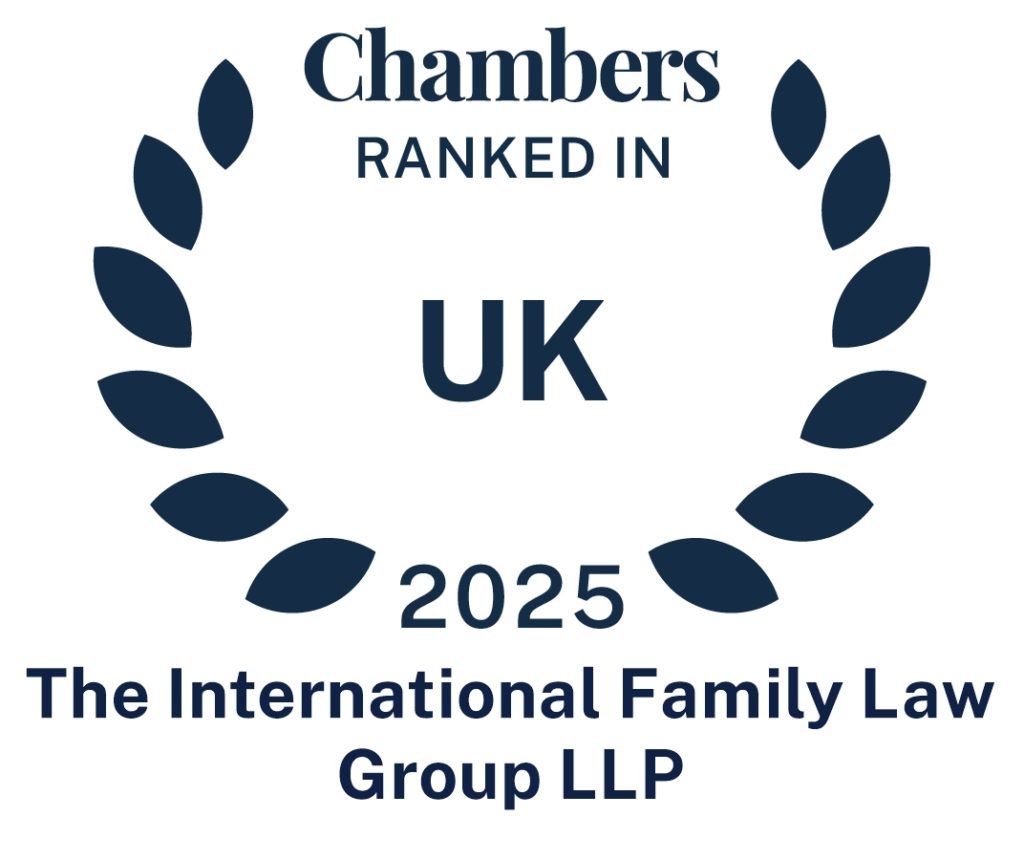‘The valuation of private companies is a matter of no little difficulty’[1].
The definition of ‘value’ is the present value of expected future net economic benefits to be generated by an asset. This definition alone gives an indication as to the complexities in arriving at a reasonable value of an asset. The complexities when seeking to determine the value of an asset where there is no sale/purchase negotiation underway increase exponentially.
The process of valuing a business on divorce can, therefore, be very difficult. The data on which business valuations are based is often volatile, there is typically no open market on which to test the valuation, and there is regularly competing evidence from two (or more) expert witnesses as to the value of the business interest.
Deciding how to treat business interests on divorce, even once the value has been ascertained, is often no easier. There are regularly arguments about categorisation (i.e., to what extent was the value of the business generated during the relationship), disputes can arise as to the appropriateness of discounts, and lack of liquidity can cause difficulties funding a settlement.
This article attempts to compare the approach taken by the family courts in England and Australia to some of these issues. The authors are a specialist financial remedies solicitor practicing in England and a forensic accountant practising in Australia.
For a comprehensive overview of the treatment of business interests on divorce in England, see the excellent article by Duncan Brooks KC in the Spring 2024 edition of the Financial Remedies Journal.[2] The Australian Family Law Act 1975 and Australian cases cited in this article can be accessed on www.austlii.edu.au.
Methods of valuing a business
There are a range of valuation methods depending on the nature of the business interest being valued. The most common methods (which are used in both England and Australia) are:[3]
(1) net asset valuations, which are often used, for example, when valuing a property investment business (cost approach); and
(2) earnings-based valuations:
(a) earnings before interest, tax, depreciation and amortisation (EBITDA) x multiplier +/- surplus/deficient assets – debt (market approach); and
(b) discounted cash flow (DCF) valuations (income approach).
In England it is for the court, not the expert, to value a business interest on divorce. Although the English court will usually direct the parties to instruct a single joint expert, it is common in ‘bigger money’ cases for one or both parties to subsequently instruct their own expert to put forward competing evidence. It is not therefore uncommon in England to have two (or more) expert reports before the court at final hearing.
In Australia, a single expert regime is generally adopted by the court where the parties cannot agree on the value of a business interest. The court will generally accept a single expert’s findings as to the value of the asset to include in the property pool. However, a single expert may be asked to give evidence at final hearing and be cross-examined. The judge may also ask questions and ultimately decide on a value that is different to that measured by the single expert. The expert, unless instructed otherwise, will generally adopt a ‘market value’ basis of value, known as the ‘hypothetical willing but not anxious purchaser and vendor’ principle.[4]
Hindsight
As Mostyn J said in , it is an iron principle of valuation theory that when advancing a historic valuation of an item the valuer should be transported back in time to the date of that valuation and must formulate their opinion using only the data available at that time. However, when seeking to place a value on a business interest on divorce, the English Family Court can (and very often does) use knowledge of subsequent events to fix a fair value on the business interest.
This occurred in when the court was seeking to determine the value of a business at the date the parties separated (which was 6 years before the date of the trial). In that case Moylan J (as he then was) said as follows:
‘[30] Valuations, when required, should be based on real and known events. This approach ensures that valuations are more likely to be closer to the reality of any given situation than the result achieved by ignoring known history. It is difficult also to see how the latter approach, of ignoring known facts, could be consistent with the court’s obligation to achieve a fair outcome.’
This approach has been followed by the English Family Court in a number of cases including ‘Jones v Jones, Robertson v Robertson’ and ‘WM v HM’ (which was upheld by the Court of Appeal in Martin v Martin).The rationale for taking hindsight into account was explained by Mostyn J in E v L as follows:
‘[63] Blinding oneself to the knowledge of subsequent events, whilst conforming to the purity of valuation theory, obviously risks serious injustice. It must never be forgotten that the exercise has as its endgame a calculation which results in an award of hard cash to the claimant.…
[66] I regard it as unreal, and a likely source of real injustice, for calculations to be undertaken to work out the scale of acquest (and thence the wife’s award), on historic figures which with hindsight are shown to be completely wrong. It is not consistent with “a broad analysis of fairness”.’
In Australia, the use of hindsight is considered on the basis of two categories of subsequent events:
(1) events that affect value. These should not be considered in the valuation unless the facts of those events were known or knowable at the valuation date; and
(2) events that do not affect value but provide evidence of the value that existed at the valuation date. These may be considered in the valuation.
In Pope & Pope (2012) FAMCA 204 a single expert valued the husband’s interest in a group of companies at the time of co-habitation of the parties (April 1995) in the amount of AU$1.8 million (utilising a capitalisation of earnings approach), her valuation explaining that the valuation must reflect the information and circumstances ‘known or knowable’ at the valuation date. This was important as the subject business’ growth in the later 1990s was ‘inarguably described as spectacular’.
In evidence, the single expert explained that had she been able to utilise full hindsight she would have undertaken a DCF approach utilising 5-year future cash flows from April 1995, which, in ‘very rough’ terms, would have resulted in a value in the high teens of millions of dollars. The judge commented on this evidence by saying:
‘[138] While this evidence does not affect the value as at the date of cohabitation, it provide [sic] support for the husband’s claim that he introduced not only an asset of significant value but one which was fundamental to the acquisition of future income and wealth.’
On that basis the judge decided the husband’s contribution to the value of the parties’ assets at the date of the hearing significantly outweighed the wife’s contributions.
Discounts
When valuing a business on divorce the English Family Court will often apply a series of discounts. Again, it is for the English court (not the expert) to determine whether, and if so to what extent, a discount should be applied. In (the brilliantly named) case of ‘HO v TL’ regarding the valuation of a chain of hotels, Peel J categorised these discounts as either:
(1) accountancy discounts; or
(2) court-based discounts.
An accountancy discount means a minority discount and has two elements:
(1) a discount for lack of control; and
(2) a discount for lack of marketability
A discount for lack of control may be applied where one party owns some, but not all, of a business. In practice these discounts are rare. As Mostyn J said in Clarke v Clarke , the English Family Court will look to the future and ask itself whether, on a balance of probabilities, the business interest will be sold independent of, or in conjunction with, the rest of the business. In many cases the court will conclude that it is more likely than not that the business will be sold as a whole. If, however, the court finds that the interest will be sold separate from the rest of the business, the English court may apply a discount. An accountancy discount may also be applied where there is a lack of marketability for the business.
A court-based discount may be applied by the English court to reflect that a business interest may be illiquid and/or laden with risk. The English court has explained in numerous cases that there may be a difference in quality between, for example, cash (which is liquid and free of risk) and an interest in a business (which may be illiquid and laden with risk). As an example, in Chai v Peng the court discounted the valuation of the business by 30% (10% to reflect the fragility of the valuation and 20% to reflect illiquidity).
As Peel J said in HO v TL, in the right case it is permissible for the English court – having already applied an accountancy and/or court-based discount – to decide when determining how to allocate the resources on divorce that the person who is retaining the business asset should receive more than half the assets to reflect that their share of the settlement is less liquid/safe than the settlement being received by the other party to the divorce.
In Australia, it is up to the expert to apply any discounts considered relevant, whether to a minority interest and/or lack of marketability.
Typically, in a ‘market value’ basis of valuation the expert will consider the appropriateness of:
(1) a minority interest discount – a discount to the pro-rata value of shares to reflect a minority share parcel; and
(2) a lack of marketability (illiquidity) discount – a discount to the pro-rata value of shares to reflect the fact there may not be a ready market for unquoted shares.
A minority interest discount will come into play where the share parcel holder has little or no control over the management decisions of the particular entity.
A lack of marketability (illiquidity) discount will come into play where there is uncertainty and likely delay in converting the shareholding to cash.
Often the two types of discount are dealt with together and typically range from between 20% to 50% of the pro-rata value of the shares.[4] The more technically correct approach in generally accepted valuation theory[5] is first to apply a discount for lack of control (DLOC), followed by the application of a discount for lack of marketability (DLOM). The arithmetical effect of this is that the application of a DLOC of 25% and DLOM of 15% results in an overall discount of 36.3%. Many valuers would (incorrectly) deduct 40% (25% plus 15%) from the pro-rata value.
Another common mistake made by valuers is that liquidity and marketability, although closely related, are not the same. Technically, these are two distinct factors which should be applied separately.[6]
In the late 1980s and early 1990s the Family Court in Australia started to question the traditional premise of ‘market value’. A number of cases dealing with shareholdings in closely controlled family entities saw no or low discounts. This gave rise to a legal concept of the basis of value in a family law context – ‘value to owner’.
In Sapir v Sapir (No 2) (1989) FLC 92-047 the judge concluded that the value of the wife’s shareholding in a family company was the value of the shares to the wife, not their commercial value or their value to a hypothetical purchaser (and thus the departure from ‘market value’). In this case, each party had their own valuation expert and the judge accepted the position of the husband’s expert, opining that:
‘Essentially the accountants valued two different things. The husband’s accountant has valued what is the value of the shares to the wife. His basic philosophy was that the only foreseeable purchaser of the wife’s shares would be her parents and they would not be worried about the fact that they were buying a minority holding. Accordingly, a reasonable person in the position of the wife would accept a small discount on the asset value of the shares so as to have cash now, but there would be a figure below which she would not go but she would rather wait for her parents to pass on rather than part with the shares now. The wife’s accountant valued the shares on what they would be worth to an independent third party. Such a person would discount the asset backing value heavily because of the difficulty in either realising his investment by winding up the company or alternatively, on selling the shares to some other third party who would have similar problems.’
Although no hard and fast case law exists, in Scott & Scott (2006) Fam CA 1379 the judge noted her own responsibility to determine the value of the husband’s interest on the whole of the material before the court, including the divergent expert opinion. The judge considered the valuation methodology adopted by each of the parties’ experts and observed that the concept of ‘value to owner’ considers and takes into account the benefits to a particular owner even though this may not be based on a hypothetical third party purchaser.
It is worth noting that, in valuations for the Australian Family Court, if the expert is instructed to value the entity of the basis of ‘value to owner’ (as opposed to market value), it is unlikely any of the discounts mentioned above will be applied.
The ‘value to owner’ concept is similar to what the International Valuation Standards Council refers to as ‘equitable value’ which it defines as ‘the estimated price for the transfer of an asset or liability between identified and knowledgeable and willing parties that reflects the respective interests of those parties’. Mostyn J took a similar approach in Clarke v Clarke (referred to in more detail above) when he spoke about ensuring valuations are not ‘unreal’ by recognising that in practice the minority shareholding was unlikely to be sold to an unconnected third party and that the court should not therefore apply a discount for a minority interest.
Pre-marital endeavour
When deciding how to treat a business asset on divorce the court will often have to determine to what extent the value of the business was generated during the marital period. The three main approaches adopted by the English Family Court when seeking to determine what portion of the business is matrimonial are:
(1) the accountancy method;
(2) the linear method; and
(3) the intuitive method.
The accountancy method usually requires an expert to be instructed to opine as to the value of the business when the marital period commenced. In Jones v Jones an expert had valued the business at £2m at the date of the marriage and £25m at the date of the trial. However, the Court of Appeal increased the historic valuation by £2m to reflect the latent potential in the business at the time and by a further £5m to reflect passive growth.
In GA v EL Peel J discouraged the accountancy method when he said as follows:
‘[32] In my judgment, although there may be cases where the historical valuation exercise can be carried out relatively simply, and will clearly assist the parties and the court, I consider that there must be clear justification for this approach to be adopted before the court gives permission for expert evidence as to past values to be undertaken. It should very much be the exception, rather than the norm.’
The linear method was adopted by Mostyn J in WM v HM and upheld by the Court of Appeal in Martin v Martin. It involves taking the date the business commenced, the date the marital period started and (subject to post-separation accrual – dealt with in more detail below) the date of the trial, and apportioning accordingly. This method has the benefit of being simple, quick and cost-efficient, but it risks giving insufficient attention to when the value in the business was generated.
The intuitive approach has been adopted in a number of cases including Robertson v Robertson. In this case the husband had created the business (ASOS) 6 years prior to the 10-year marriage. Holman J took the view that the expert’s assessment of the value of the business at the time of the marriage (£4m) was too low and held that the present value (£141m) should be treated as to 50% matrimonial and 50% non-matrimonial. This approach has the disadvantage of being very subjective and uncertain, but has probably become the most common.
In Australia, there is no consistent approach by the court to the issue of ‘pre-marital endeavour’. Instead, the Family Law Act 1975, at section 79 1C4(a), requires that the court consider the financial contribution directly or indirectly by or on behalf of a to the to the acquisition, conservation or improvement of any of the of the parties. The effect of this is that the court will consider the value of each parties’ assets brought into the marriage and the value of the pool at the end of the marriage, and determine the percentage financial contribution by each party.
In the Australian case previously mentioned in relation to the use of hindsight (Pope & Pope (2012) FAMCA 204), rather than disagreeing with, and adjusting, the expert’s valuation at co-habitation, the judge concluded that the husband’s AU$1.8m corporate interest at co-habitation was ‘fundamental to the acquisition of future income and wealth’ and determined that the husband’s financial contribution during the course of the marriage was 74%.
Any property acquired prior to the commencement of a marriage or a de facto relationship becomes that party’s direct financial contribution towards the relationship and is called an ‘initial contribution’. It must be remembered, however, that the court has discretion in assessing the parties’ contributions and there is no set formula to assess initial contributions.
Post-separation accrual
It is harder to persuade the English Family Court to exclude the value of a business that may be attributable to work undertaken post-separation. As Mostyn J said in E v L:
‘[73] In my view there are already in this field too many uncertainties and subjective variables. The law needs to be transparent, accessible, readily comprehensible and should propound simple and straightforward principles. In my experience convention and tradition dictate that save in cases where there has been undue delay between the separation and the placing of the matter for trial before the court, the end date for the purposes of calculation of the acquest should be the date of trial. This rule of thumb should apply forcefully to assets in place at the point of separation which have shifted in value between then and trial.’
Moor J also said as follows in (another excellently named case of) DR v UG regarding the valuation of a pharmaceutical business:
‘In general, post-separation endeavour is relied on to argue for a greater share of an increased value of the assets. I have always had real reservations as to the concept for the reason that, if the assets have fallen in value, it is difficult to see why the other party should not then argue that he or she should not have to share in that fall in value. Such difficulties are avoided if the concept is severely restricted in its operation. It is, of course, a very different matter if there has been a significant delay in bringing the application, such as in Wyatt v Vince, but that is not the case here. Just as the Husband has continued to run his businesses, so the Wife has continued her contribution in caring for the four children. Moreover, she can say with some force that he has been trading her undivided share. In this particular case, I will also have to consider the very significant losses that the Husband has incurred in other business ventures since separation that the Wife had no involvement in, or even, initially, knew about.’
Although Moor J declined in DR v UG to rule out the possibility of any further categories, at present the only circumstances in which post-separation accrual has been taken into account are where:
(1) the business was established post-separation;
(2) there has been a significant delay between separation and the resolution of the proceedings;
(3) work is required after separation, for example in private equity cases involving carried interest, to harvest the asset; and
(4) the paying party is required to carry on working in the business after sale.
As a general rule, in Australia property will be valued at the time of the final property settlement/hearing. Thus, a business interest having perhaps been valued for the purpose of mediation where no settlement is reached, will require an updated valuation as close as possible to the hearing date. If one party can argue deliberate diminishment in the value of the asset since separation, the court may turn to an earlier valuation and/or award the disadvantaged party a higher proportion of the pool than would otherwise have been the case.
Methods of distribution
When deciding how to divide the assets on divorce in a case where there is an interest in a business the English court will generally:
(1) fix a value at the date of the trial;
(2) order a deferred lump sum to be calculated at a future date;
(3) order a sale of the business; or
(4) transfer some shares in the business between the parties.
In most cases the English court will seek to fix a value at the date of the trial if possible. This often involves offsetting so that the other party receives more of the other assets and/or ordering a fixed lump sum which may be payable over a period of time.
The English court can also order a deferred lump sum to be calculated contingent on the performance of the business in the future, although this requires very complex drafting, risks sharing post separation income, and is contrary to the clean break principle.
Although the English court has the power to order the sale of a business interest on divorce, in practice this is very uncommon. Similarly, the English Family Court is very unlikely to order that an interest in the business should be transferred unless the other party already has an interest.
In Australia, the Family Law Act 1975, section 81, requires that the court shall, as far as practicable, make such orders as will give a clean break to the financial relationships between the parties (excluding any orders made as to maintenance).
Thus, the value of a business interest will be fixed at trial and included in the marital asset pool available for distribution. This may also involve offsetting so that the other party receives more of the other assets.
The Australian court will largely leave it up to the parties to determine how the percentage split ruled by the court will be effected. It may, however, rule that assets are to be sold so as to implement the order. However, similar to the approach in England, the Australian Family Court is very unlikely to order that an interest in the business should be transferred unless the other party already has an interest.
Conclusion
The underlying valuation methodology is, as would be expected, similar in England and Australia as both countries adopt International Valuation Standards and similar professional standards. It is the different approaches taken by the courts in both countries which highlight the differences in valuing business interests on divorce. Whereas Australia adopts the traditional accountancy approach to hindsight, the English court will consider events which affect the value of the business interest even if they were not known at the valuation date. Although the definitions vary, the approach to discounts is similar in both jurisdictions save (as below) in relation to risk. The courts in both countries have discretionary approaches when assessing pre-marital wealth and post-separation accrual.
Arguably the most significant difference between England and Australia relates to the weight given to the risk that will be shouldered by the party retaining a business interest post-divorce. In England the court may, when determining the value of an asset and/or when deciding how to allocate the resources between the parties, take into account the inherent risk associated with a business interest. It has long been established in the English court that there is a difference in quality between a copper-bottomed asset and a risk-laden asset. This exercise is not as common when dealing with business assets on divorce in Australia, albeit such risk may be reflected in the ultimate percentage split of assets.
It is beyond the scope of this article to explore the (numerous) other differences between England and Australia on relationship breakdown. Specialist advice should always be taken in both countries where there is a choice as to the jurisdiction in which to bring proceedings. But for cases involving business interests, careful and early consideration should be given as to factors such as approach to hindsight, pre-marital/post-separation endeavour and allocation of risk when dealing deciding in which jurisdiction to commence proceedings.
This article is not intended to be a comprehensive statement of law or practice and must not be relied on as such. The authors have given due care and diligence in the preparation of this article, however no warranty is given as to its accuracy and completeness.
First published in the Financial Remedies Journal Issue 3 2024
Author: Michael Allum – Partner, The International Family Law Group LLP (England)
Author: Jacqueline Woods – Forensic Accountant, KordaMentha (Australia)
Michael Allum
[email protected]
The International Family Law Group LLP
www.iflg.uk.com
© December 2024
Notes
[1] Versteegh v Versteegh [2018] EWCA Civ 1050, Lewison LJ [185]
[2] ‘Businesses in Financial Remedy Claims’, available at https://financialremediesjournal.com/content/businesses-in-financial-remedy-claims.e128c4cf8fcc4552830b10c8489a4752.htm
[3] The three alternative methods defined by the International Valuation Standards Council are the market approach, the income approach and the cost approach
[4] A principle established in Spencer v The Commonwealth of Australia (1907) 5 CLR 418
[5] Ranges of discounts applied are underpinned by various empirical studies of publicly traded companies. However, the actual % applied by the valuer is subjective
[6] Shannon Pratt, Valuing a Business (McGraw-Hill Co, 6th edn, 2022), p 401 & p 421
- Michael Allumhttps://iflg.uk.com/team/michael-allum
- Michael Allumhttps://iflg.uk.com/team/michael-allum
- Michael Allumhttps://iflg.uk.com/team/michael-allum
- Michael Allumhttps://iflg.uk.com/team/michael-allum











